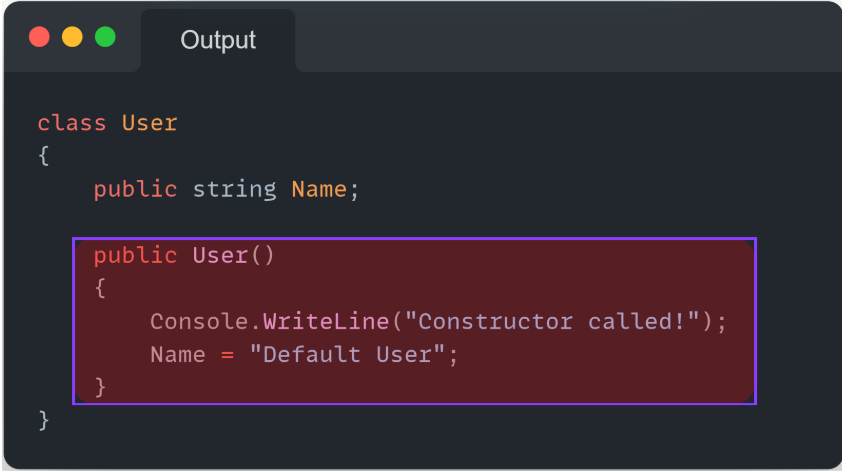The Untold Truth: Creating C# Objects Without Calling a Constructor
A deep dive into how C# can instantiate objects without ever running their constructors — and when it actually happens.
🧠
In C#, constructors are supposed to be the first line of defense — the foundation on which every object is born. But what if I told you there's a secret tunnel beneath that gate?
Yes — you can create a C# object without ever calling its constructor.
Whether you're a seasoned developer or a curious learner, this trick will bend your understanding of how C# handles object instantiation.
Let’s go down the rabbit hole. 🕳️🐇
🤔 Why Skip the Constructor?
There are rare (but valid) scenarios where skipping a constructor is useful or even necessary:
✅ Deserialization: When reconstructing an object from JSON, XML, or binary formats.
✅ Mocking Frameworks: Creating proxy or fake objects in unit tests.
✅ Performance Tuning: In extreme edge cases involving object pooling.
✅ Low-Level Runtime Work: Serialization libraries, ORMs, and AOP tools.
In these cases, calling the constructor might:
Trigger unwanted side effects
Be impossible due to private/protected access
Invalidate the deserialized state
🔍 The Magic Method: FormatterServices.GetUninitializedObject
C# gives us a backdoor via the System.Runtime.Serialization namespace:
object FormatterServices.GetUninitializedObject(Type type)This method allocates memory for an object without invoking any constructor — not even the parameterless one.
🚧 Code Example: Constructor Not Called!
using System;
using System.Runtime.Serialization;
class User
{
public string Name;
public User()
{
Console.WriteLine("Constructor called!");
Name = "Default User";
}
}
class Program
{
static void Main()
{
// Normal instantiation
var user1 = new User();
Console.WriteLine($"user1.Name: {user1.Name}");
Console.WriteLine();
// Dangerous instantiation — constructor is skipped!
var user2 = (User)FormatterServices.GetUninitializedObject(typeof(User));
Console.WriteLine($"user2.Name: {user2.Name}");
}
}🧾 Output:
Constructor called!
user1.Name: Default User
user2.Name:As you can see, user2 was created without calling the constructor — and Name is null.
⚠️ Why This Is Dangerous
Here’s the catch: Skipping constructors skips initialization logic.
That means:
Required fields might remain unassigned
Invariants may be broken
Methods might throw
NullReferenceExceptionDebugging such objects is painful
It’s like creating a car without the ignition system — it exists, but don’t expect it to drive.
✅ When Should You Use This?
Only when you meet all of the following:
You’re building a serializer, mocking library, or performance-critical framework
You understand the object's internal structure and state dependencies
You take responsibility for initializing fields manually after creation
If you're writing standard application code — avoid it. Use regular constructors and let the runtime handle lifecycle.
🧵 TL;DR
C# has a hidden trick via
FormatterServices.GetUninitializedObjectIt creates an object without calling the constructor
JSON libraries like
Newtonsoft.Jsonuse this behind the scenesUse it only in advanced scenarios — it's powerful, but risky
📣 Final Thoughts
C# is elegant, but beneath the surface, it’s packed with low-level power.FormatterServices.GetUninitializedObject is one of those sharp tools — amazing for meta-programming and serialization… but not for everyday development.
Remember: just because you can do something, doesn’t mean you should.
💬 What do you think?
Have you ever used this method in real projects? Share your experience or horror story in the comments!



